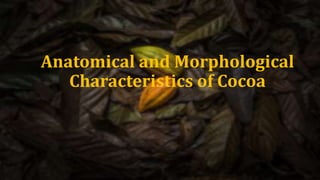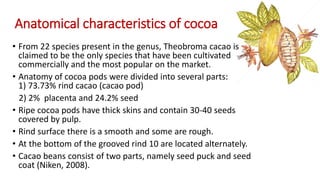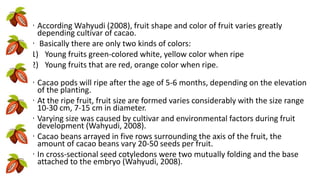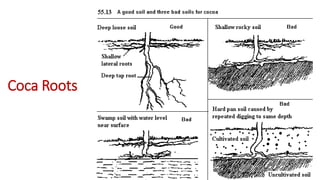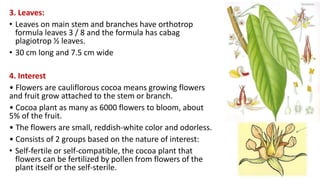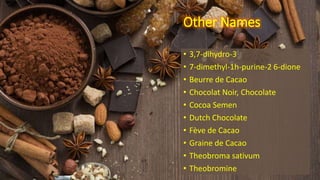The document provides comprehensive information on the anatomical and morphological characteristics of cocoa (Theobroma cacao), including its classification, parts of the plant, and the process of chocolate production. It discusses the various cultivars, their traits, and the uses of cocoa, particularly in relation to heart disease and high blood pressure. Additionally, it outlines the historical references and scientific studies related to cocoa's health benefits and its cultivation.
